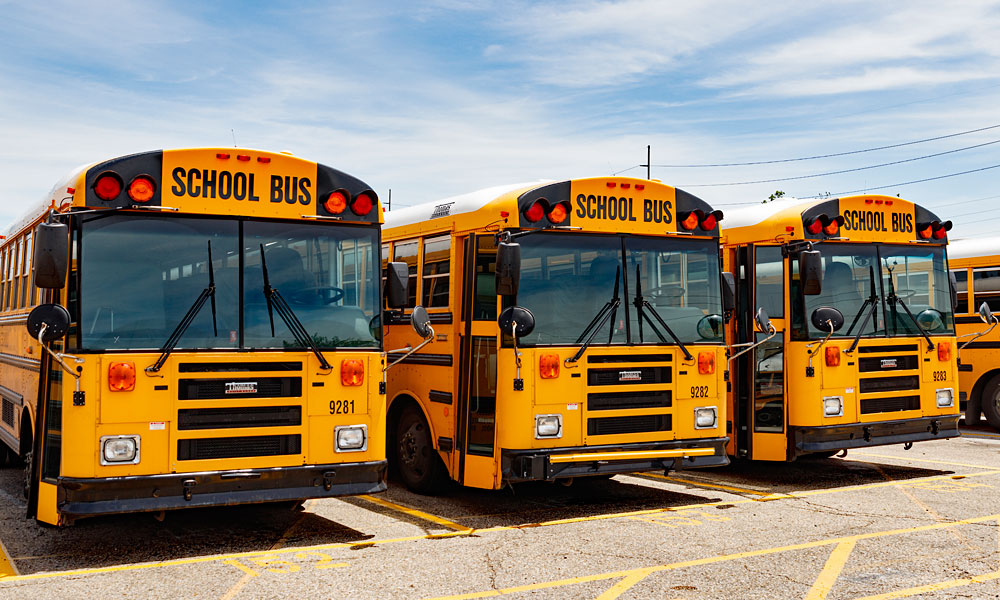Transitioning to the Next Normal: Back to School August 2020

All learning institutions—K-12 schools, colleges, and universities—face similar problems and staggering logistical challenges to get students back-to-school:
- Health and safety concerns of returning students, instructors, and support personnel
- Immediate costs associated with implementing needed safety measures and additional equipment
- Funding issues: private schools and colleges are run as businesses; state colleges and K-12 school systems depend on dwindling state budgets. Additional Federal-funding may be too little, and come too late to help.
Most states and municipalities struggle to agree on what should, and can, be done to open schools in August and September. National guidelines from the US Centers for Disease Control are promised by the end of July—too late for proper planning, funding, and implementation. High-population states such as California (CA) have elected not to wait for Federal guidelines. Announced in July, the 770,000 students who attend CA State Universities and the University of California will not be going back to campus; all classes will be online. The governor also issued a set of guidelines for K-12 schools that involve: face masks, social-distancing, frequent hand washing, daily checks for symptoms, regular staff testing, requirements that all students have devices and internet connectivity for distance-learning, and last but not least, challenging assignments.
Research finds COVID-19 infection rates increase when people congregate in groups; masks and social-distancing are must-do guidelines. As some states began to reopen in May and June, many adults seemed unable, or unwilling, to follow these two easy-to-understand requests. As a result, on 20 July, The New York Times reported that "coronavirus cases are rising [again] in 40 states across the country." With infection rates growing quickly—and an increased number of deaths likely to follow—many healthcare professionals, teachers, and parents are pushing back against the White House mandate that schools reopen on schedule this fall. Consider that: touching and feeling—not recommended under the current circumstances—are an important part of young children's learning processes, and college students sense of invincibility (look at any 2020 Spring-Break beach photo), and close-living quarters impinge on one's ability to adhere to health-safety guidelines.
Who's involved?
The top bar in the figure below shows the VALS distribution of parents with children under the age of 18 living at home—30%, or 75.1 million US adults. Consumer groups with an Achievement Motivation (Achievers and Strivers) make up 40% of all parents. Achievers, Innovators, and Thinkers are the groups most likely to live in upper middle-class neighborhoods with good schools, or they have the ability (and inclination) to send their children to charter, or private schools. Strivers are among the groups most likely to live in relatively poor, ethnic neighborhoods with underfunded schools, a mix of students speaking different languages, and often overcrowded conditions. Depending on the consumer group's location on the VALS framework, each has a somewhat different view about reopening schools in the near future. For example, Achievers in entitled positions might feel "protected" by their status and therefore comfortable sending their children back to school. Strivers on the other hand, may feel vulnerable and torn between the health risk to their entire family of sending their children back to school and the benefits of school attendance such as participation in The National School Lunch Program, and first-line medical attention as needed.
Roughly 4% (9.4 million) adults are employed at pre- through K-12 schools; seven of the eight VALS types are represented in this population. Because teachers and administrators are required to hold at least a bachelor's degree, Innovators, Thinkers, and Achievers are the most likely to be in the classroom or front office. Experiencers who have completed their college education may teach, or coach, or do both. Believers, Strivers, and Makers are most likely in necessary support-staff positions such as food service, and operations such as maintenance. K-12 employed includes public, charter, and private school staff; the average income is $49,000. In the present, highly-charged political environment, which side of the argument K-12 staff members support (fully open schools, or delay and exert extreme health and safety caution) depends, in large part, on one's political tribe. From a VALS perspective, the majority of educators are interested in facts; they describe their political orientation as liberal. As a result, educators are far less likely to watch Fox News than all Americans.
Approximately 5.6 million adults, or 2.2% of the total population, list their employment as "student." This number is included in the 18.8 million adults who currently attend a college or university. Almost one-half (49.5%) of students—not all college attendees—are Experiencers; Strivers (22%) represent the second highest proportion. In the figure above, compare the bar representing students with the next bar that shows the distribution of college/university professors. Locate the different VALS groups on the VALS Framework. You can see that students (Experiencers and Strivers) could not be more different from the teaching staff (Innovators and Thinkers). In a nut shell, the VALS differences between the two populations explain why college instructors are pushing back against risking their lives (for an average annual salary of $60,000) to teach students in person, most of who do not take the pandemic threat seriously.
On 21 July, the Florida teachers' union sued the governor, the Education Commissioner, the State Department of Education, and the State Board of Education charging the push to fully reopen all public schools violates a state constitutional mandate to "keep schools safe and secure." No doubt leading the charge are Innovators who have the confidence to speak out and the determination to be heard, and Thinkers who want what "ought" to be for the common good.
Learn more about how VALS can help make sense of what's happening along the way to the Next Normal. Contact us.